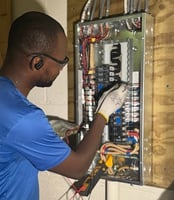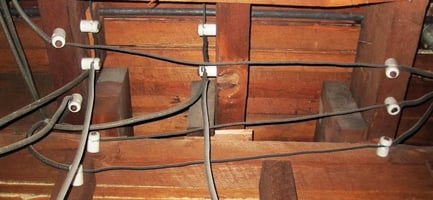As summer temperatures rise, so does the demand on your home's electrical system. With air...
EV Charging Station Installation in Historic D.C. Homes: Key Insights
 Electric vehicles are becoming more common on the streets of Washington, D.C. As more homeowners make the shift, the convenience of having a home EV charging station is hard to overlook. But if your home was built before 1950, like many of D.C.'s historic neighborhoods, there's more to consider before plugging in. Installing an EV charger in an older home presents unique challenges, especially when it comes to your home's electrical capacity. Understanding these limitations ahead of time helps you avoid surprises down the road and ensures your system can handle the demands of a modern EV charger.
Electric vehicles are becoming more common on the streets of Washington, D.C. As more homeowners make the shift, the convenience of having a home EV charging station is hard to overlook. But if your home was built before 1950, like many of D.C.'s historic neighborhoods, there's more to consider before plugging in. Installing an EV charger in an older home presents unique challenges, especially when it comes to your home's electrical capacity. Understanding these limitations ahead of time helps you avoid surprises down the road and ensures your system can handle the demands of a modern EV charger.
What Makes Older Homes a Challenge for EV Charging?
As of 2022, Washington, D.C. ranked third in the nation for EV ownership per capita, with more than 2,300 registered plug-in vehicles. The metro area also placed among the top five nationwide for EV readiness, thanks to growing infrastructure and local incentives. This upward trend means more homeowners in historic neighborhoods are exploring what it takes to charge at home. Many D.C. homes built in the early to mid-20th century still run on 60- to 100-amp service. That was plenty of power for a simpler time, but today's homes demand more, especially if you're adding an EV charger into the mix.
Level 2 EV chargers, the most practical option for overnight charging, typically require a dedicated 240-volt circuit and draw significantly more power than a standard outlet. In most historic homes, installing one without first upgrading your electrical panel is neither feasible nor safe.
Heavy-Ups: The Upgrade That Makes Charging Possible
To prepare for EV charger installation, many homeowners need what's known as a "heavy-up," a service panel upgrade that increases your home's electrical capacity. Moving from 100 amps to 200 amps gives your system the headroom it needs to safely power your vehicle along with the rest of your household.
In D.C., heavy-ups must comply with city-specific electrical codes, and homes in historic districts often face additional permitting steps, which makes experience and local knowledge essential. Working with an electrician who understands both the process and how to avoid disrupting the character of an older property is the key to a smooth installation.
How the Process Works
If you're considering EV ownership, the best first step is a professional electrical assessment. A licensed electrician will evaluate your current panel, wiring, and household usage to determine what kind of upgrades, if any, are needed.
At Wilcox Electric, we've helped many homeowners in D.C. neighborhoods, and we know how to work within guidelines for older homes while preparing your property for future-ready functionality. Once a heavy-up is complete, we'll help you choose the right EV charger, determine the best location for installation, and ensure all work is code-compliant and efficient.
Plan Ahead for a Safe, Convenient, and Effective EV Home Charging Setup
EV ownership is exciting, but planning for your charging needs at home is just as important as choosing the right vehicle. In older D.C. homes, a smart installation starts with understanding your home's limits and how to upgrade responsibly. Whether you're preparing to purchase your first electric vehicle or exploring your options for cleaner transportation, Wilcox Electric is here to help you every step of the way.
Are you thinking about going electric? Schedule a consultation to find out if your D.C. home is ready for EV charging and how we can help you get there safely.




